Abstract
Sound was presented to monkeys through one of two loudspeakers, each adjacent to a response key. A response on the key adjacent to the sound source was reinforced (correct response). A response on the other key produced a timeout (incorrect response). Under these conditions, over 90% of responses were correct within one or two sessions. When the procedure was changed so that a response on either key was reinforced independently of which speaker was sounding, similar control by location developed within one or two sessions. When conditions were modified by moving the keys away from the immediate vicinity of the speakers, the animals required about 20 sessions to reach a stable level of greater than 90% correct responses under differential reinforcement conditions. No control by location developed under nondifferential reinforcement conditions.
Full text
PDF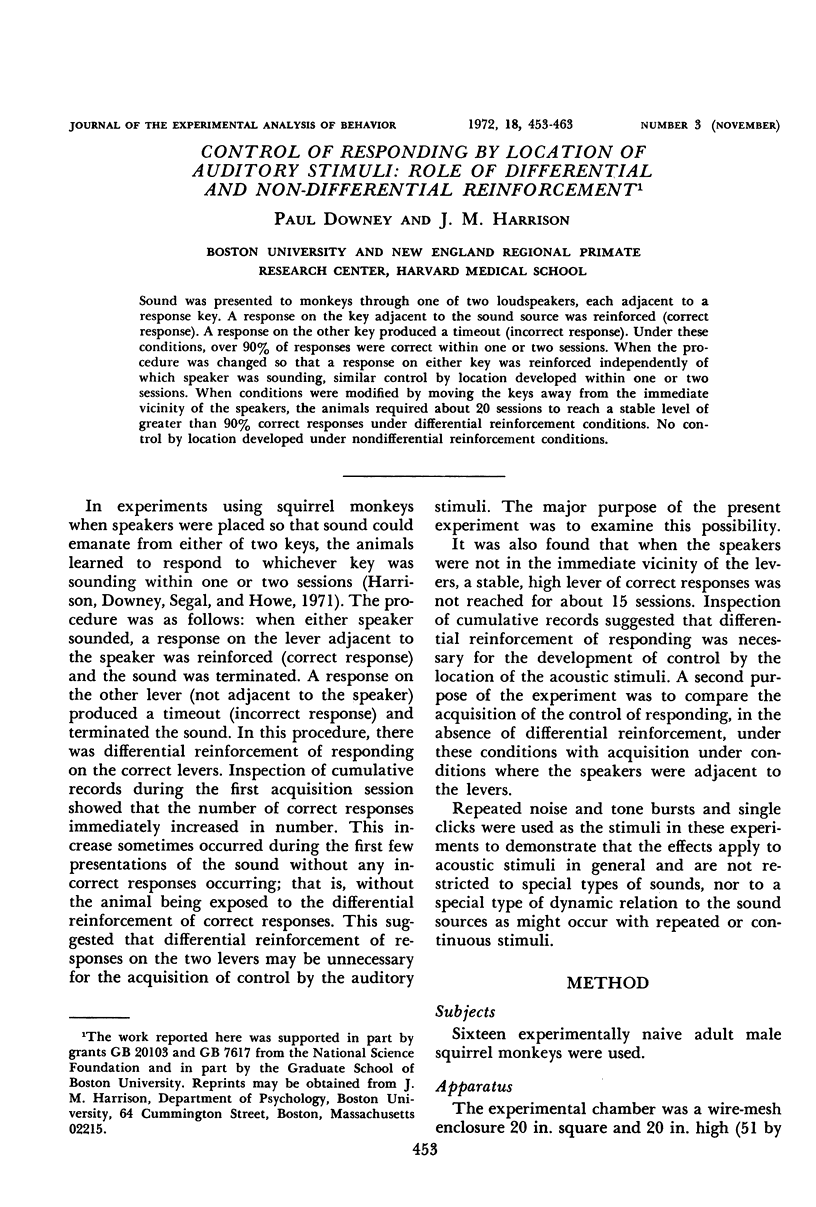
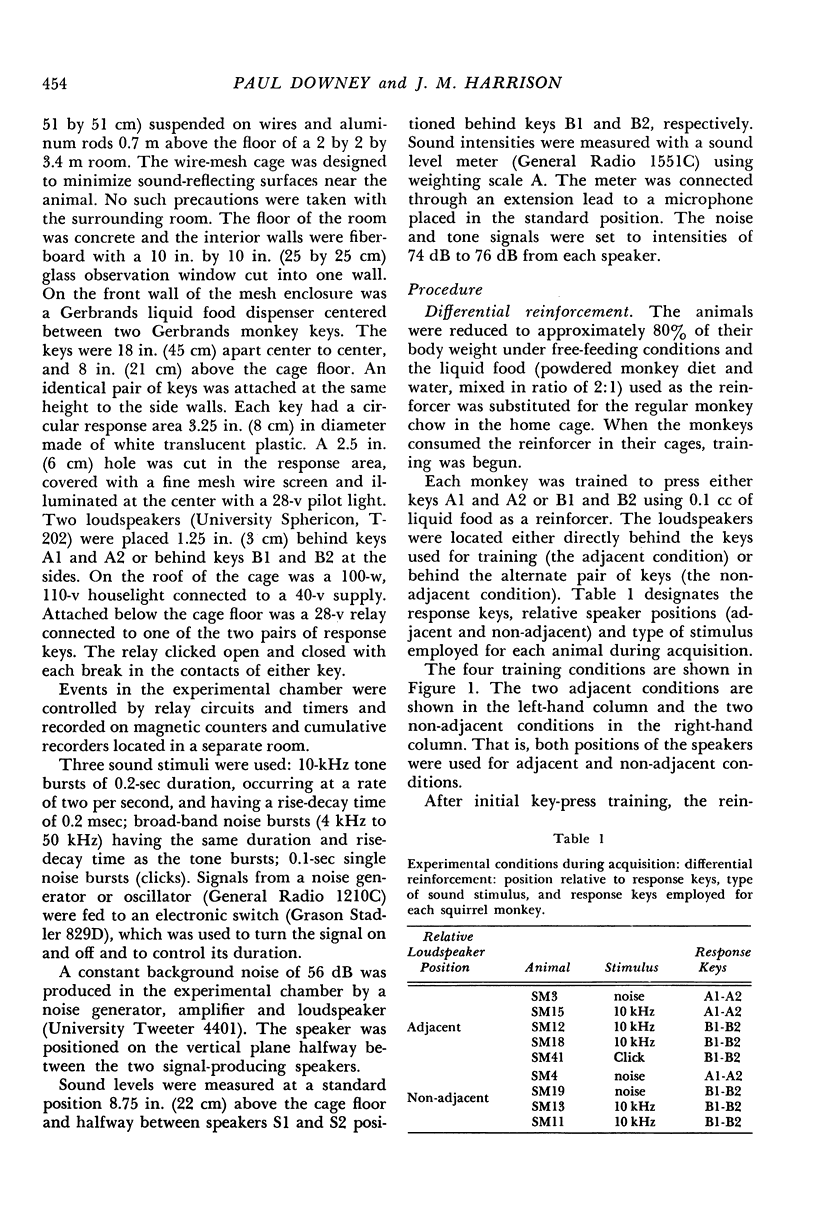
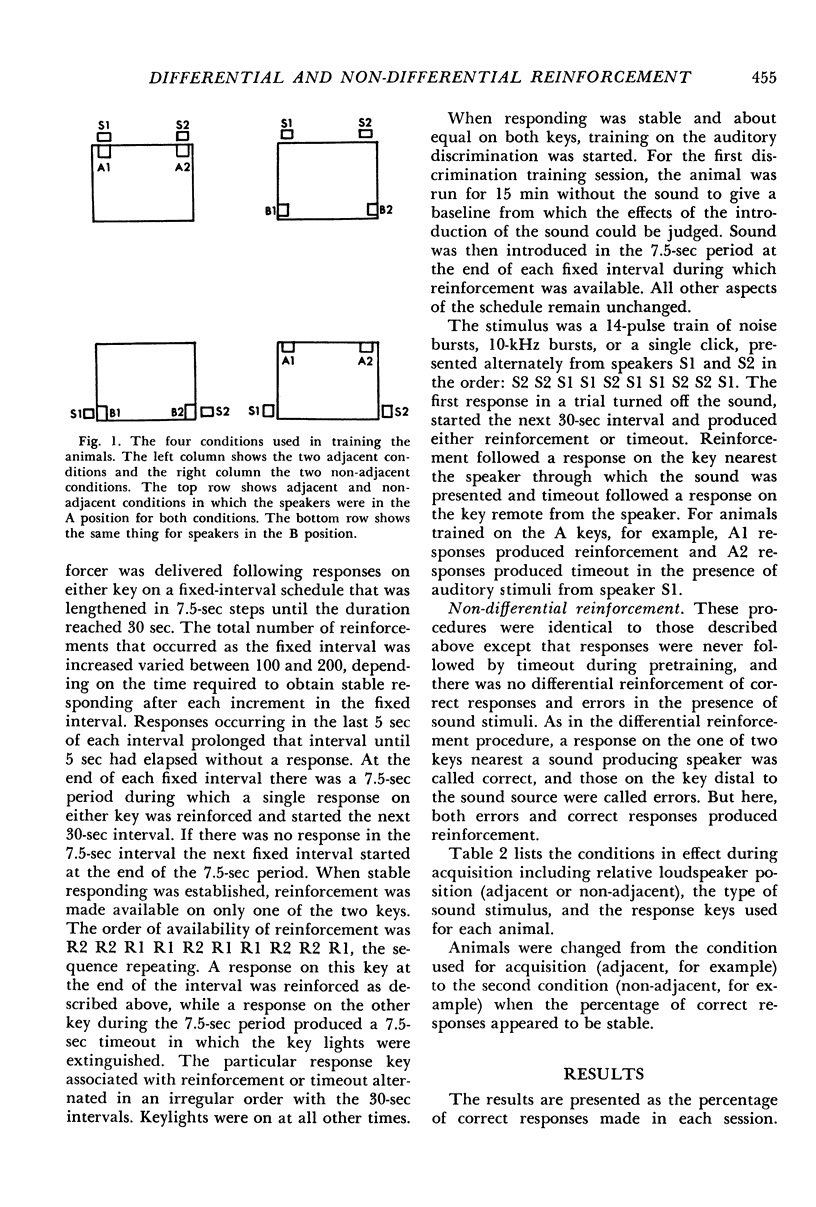
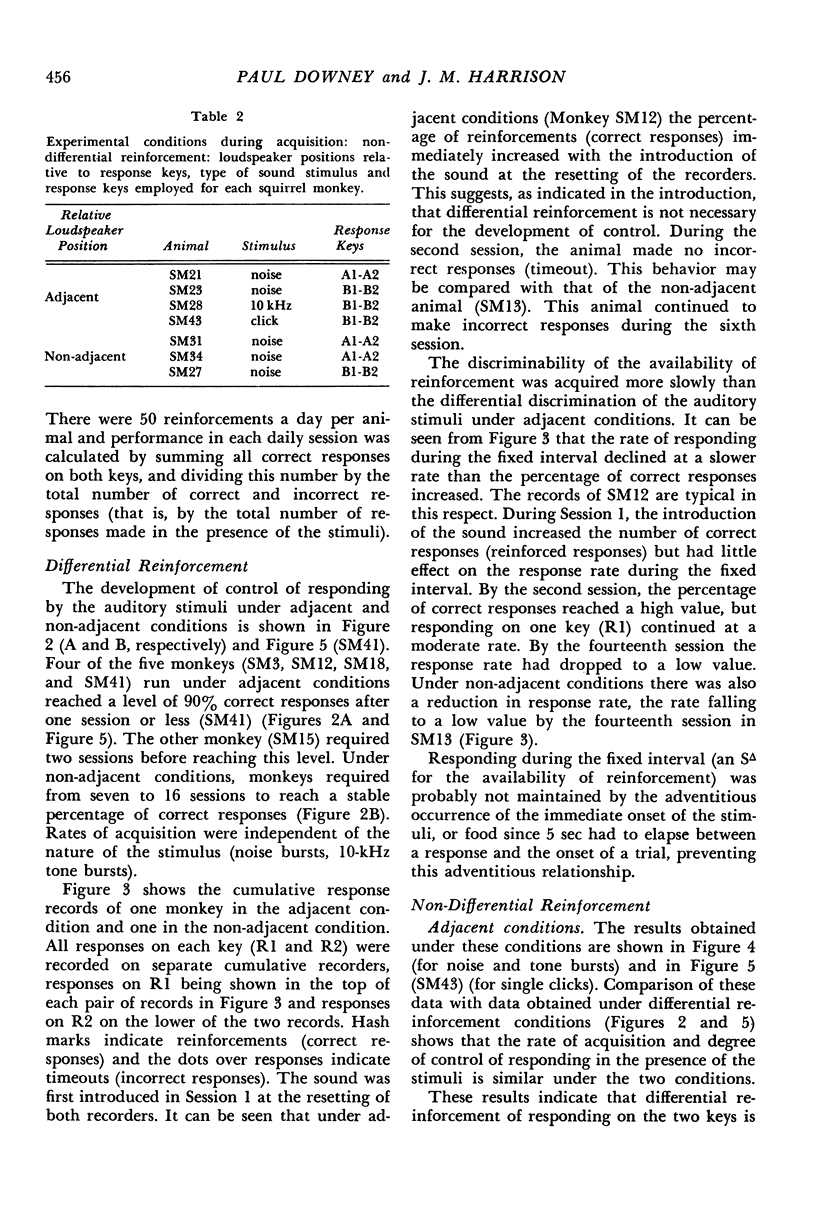
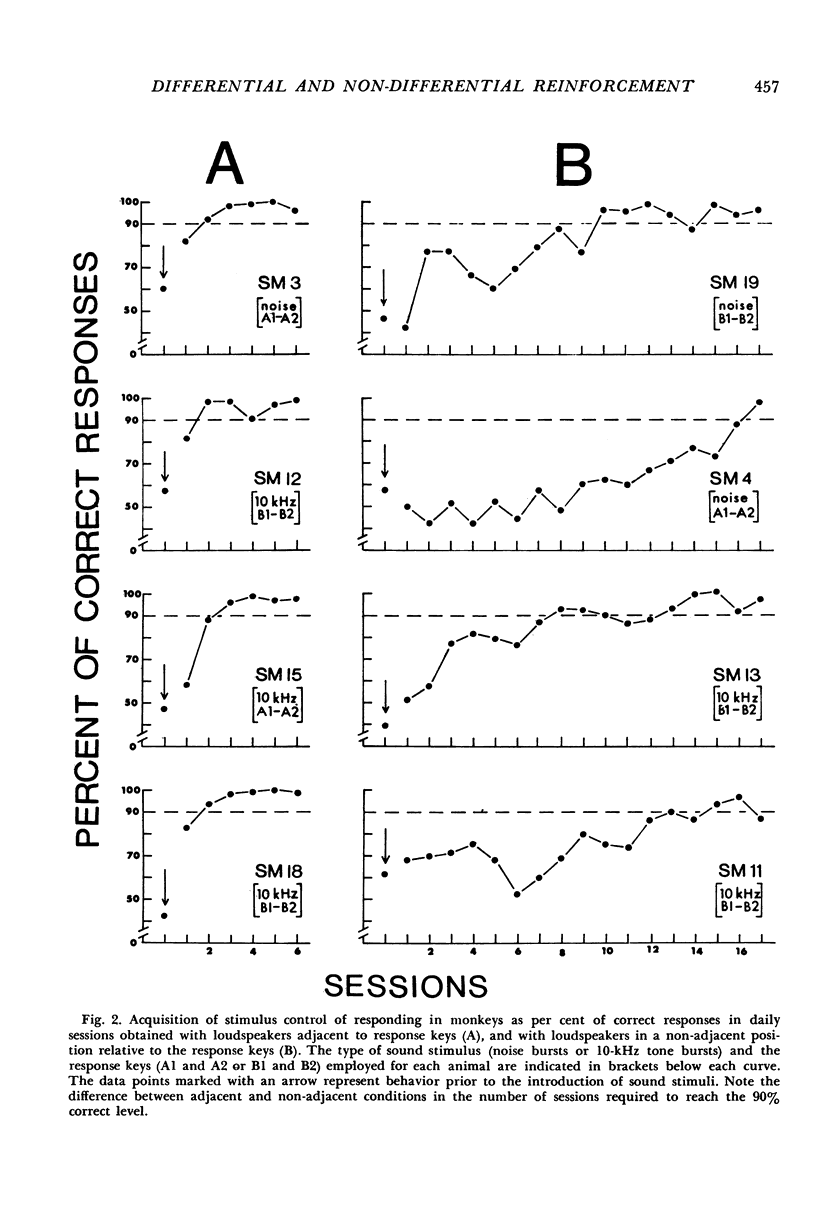
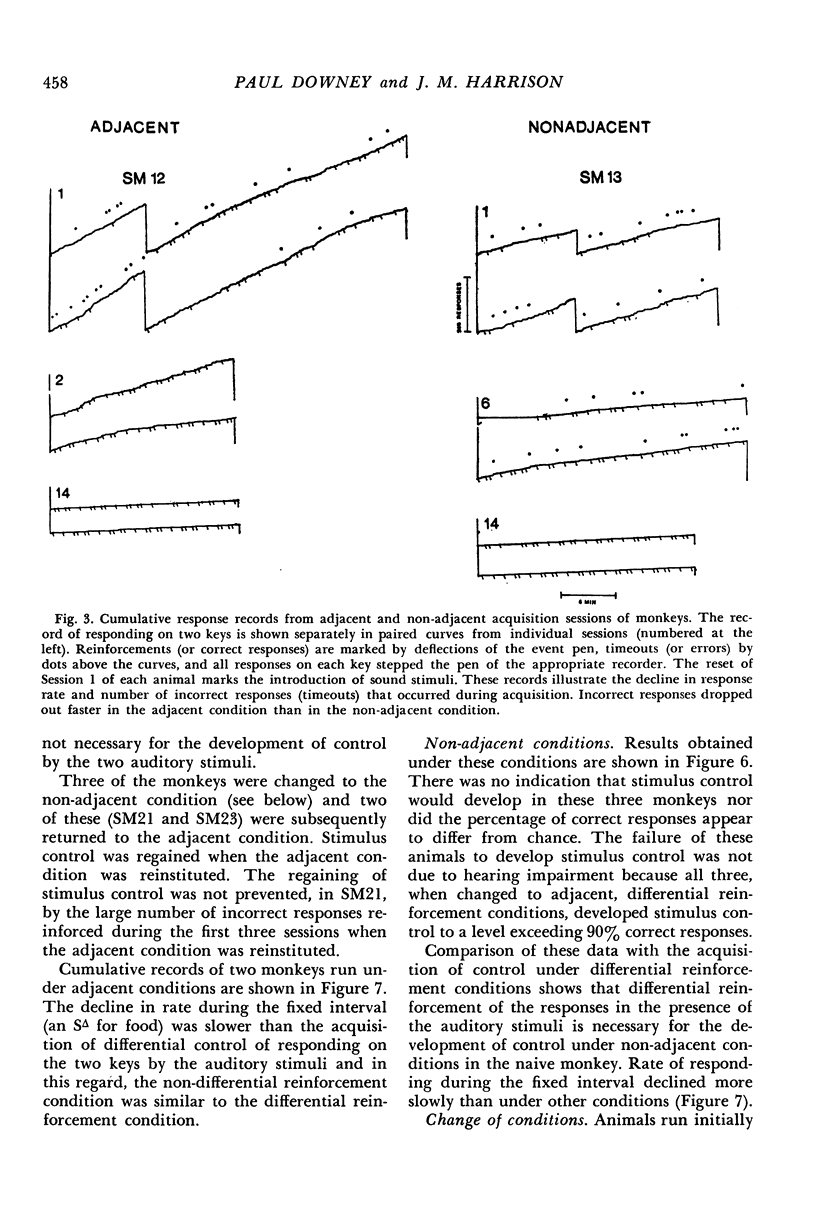
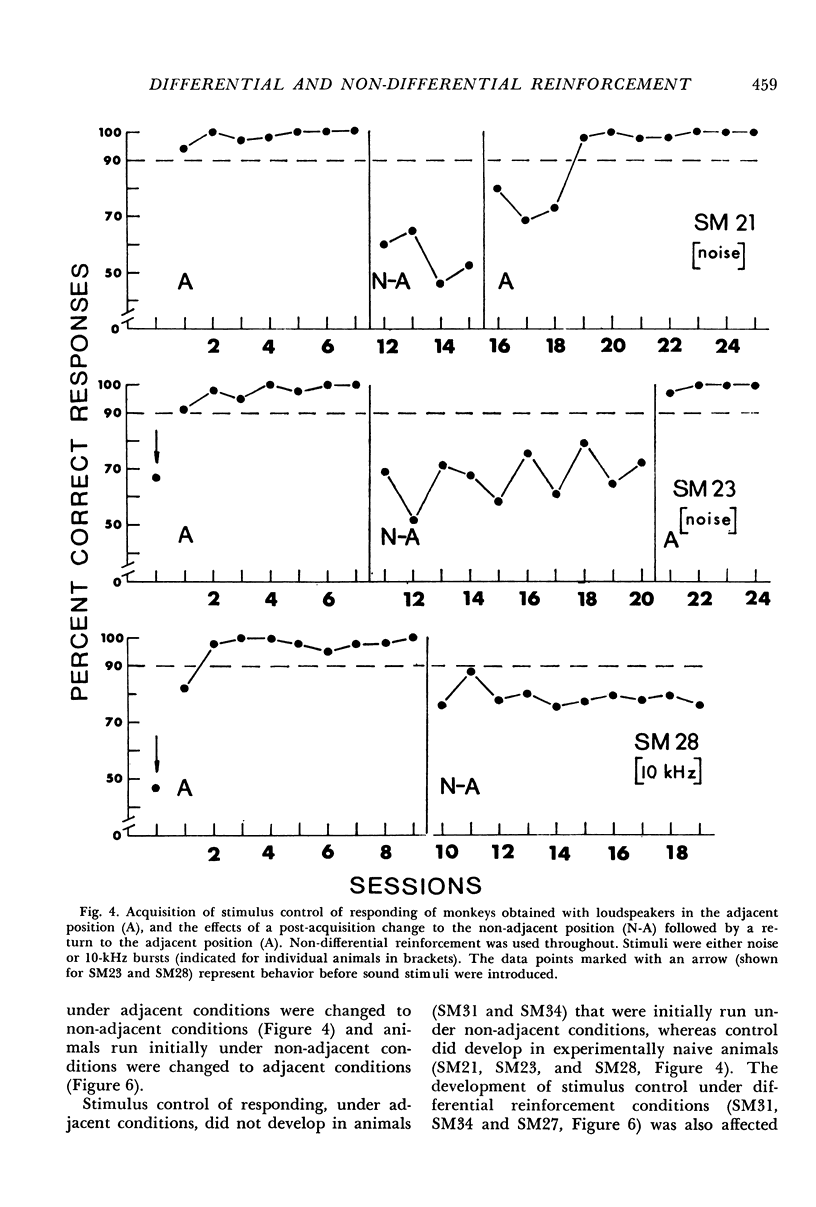
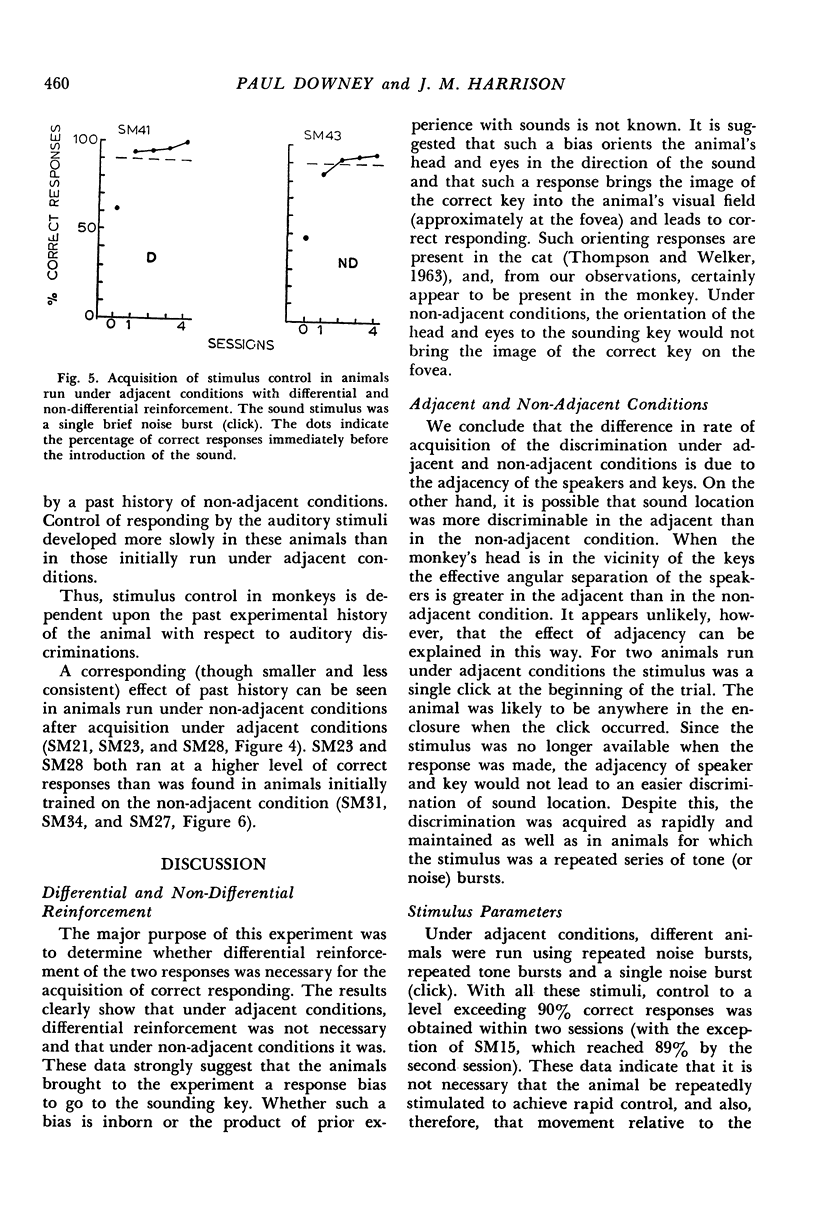


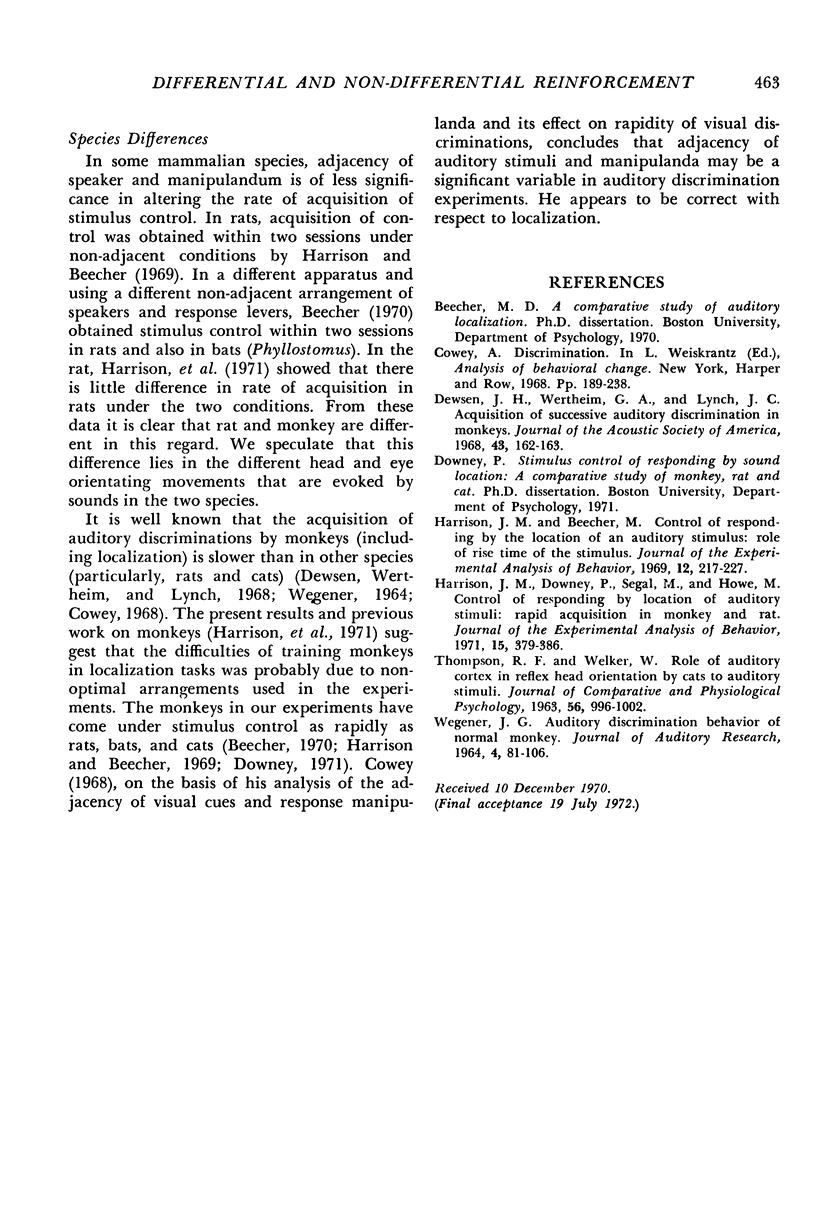
Selected References
These references are in PubMed. This may not be the complete list of references from this article.
- Dewson J. H., 3rd, Wertheim G. A., Lynch J. C. Acquisition of successive auditory discrimination in monkeys. J Acoust Soc Am. 1968 Jan;43(1):162–163. doi: 10.1121/1.1910746. [DOI] [PubMed] [Google Scholar]
- Harrison J. M., Beecher M. D. Control of responding by the location of an auditory stimulus: role of rise time of the stimulus. J Exp Anal Behav. 1969 Mar;12(2):217–227. doi: 10.1901/jeab.1969.12-217. [DOI] [PMC free article] [PubMed] [Google Scholar]
- Harrison J. M., Downey P., Segal M., Howe M. Control of responding by location of auditory stimuli: rapid acquisition in monkey and rat. J Exp Anal Behav. 1971 May;15(3):379–386. doi: 10.1901/jeab.1971.15-379. [DOI] [PMC free article] [PubMed] [Google Scholar]
- THOMPSON R. F., WELKER W. I. ROLE OF AUDITORY CORTEX IN REFLEX HEAD ORIENTATION BY CATS TO AUDITORY STIMULI. J Comp Physiol Psychol. 1963 Dec;56:996–1002. doi: 10.1037/h0048640. [DOI] [PubMed] [Google Scholar]


